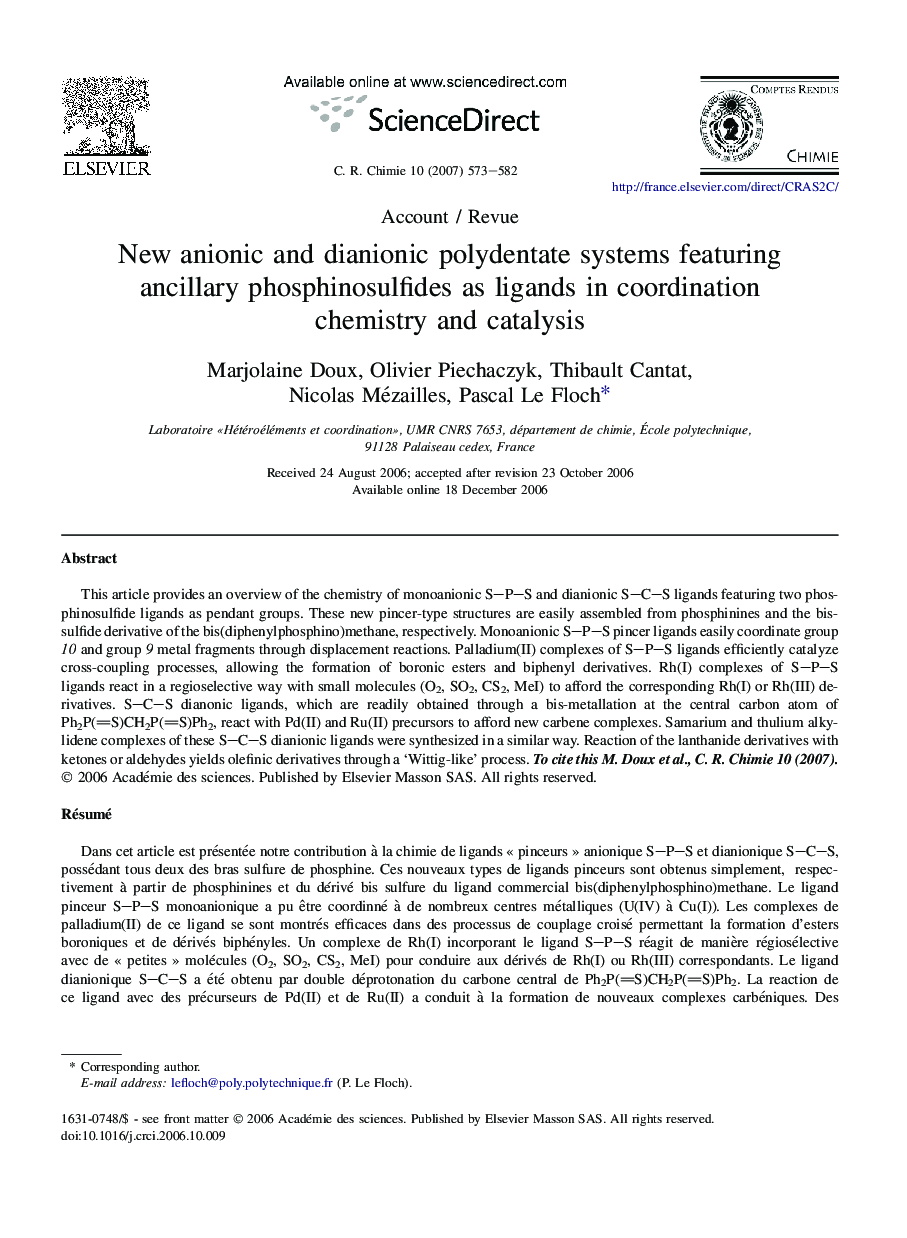| Article ID | Journal | Published Year | Pages | File Type |
|---|---|---|---|---|
| 171629 | Comptes Rendus Chimie | 2007 | 10 Pages |
This article provides an overview of the chemistry of monoanionic S–P–S and dianionic S–C–S ligands featuring two phosphinosulfide ligands as pendant groups. These new pincer-type structures are easily assembled from phosphinines and the bis-sulfide derivative of the bis(diphenylphosphino)methane, respectively. Monoanionic S–P–S pincer ligands easily coordinate group 10 and group 9 metal fragments through displacement reactions. Palladium(II) complexes of S–P–S ligands efficiently catalyze cross-coupling processes, allowing the formation of boronic esters and biphenyl derivatives. Rh(I) complexes of S–P–S ligands react in a regioselective way with small molecules (O2, SO2, CS2, MeI) to afford the corresponding Rh(I) or Rh(III) derivatives. S–C–S dianonic ligands, which are readily obtained through a bis-metallation at the central carbon atom of Ph2P(S)CH2P(S)Ph2, react with Pd(II) and Ru(II) precursors to afford new carbene complexes. Samarium and thulium alkylidene complexes of these S–C–S dianionic ligands were synthesized in a similar way. Reaction of the lanthanide derivatives with ketones or aldehydes yields olefinic derivatives through a ‘Wittig-like’ process.
RésuméDans cet article est présentée notre contribution à la chimie de ligands « pinceurs » anionique S–P–S et dianionique S–C–S, possédant tous deux des bras sulfure de phosphine. Ces nouveaux types de ligands pinceurs sont obtenus simplement, respectivement à partir de phosphinines et du dérivé bis sulfure du ligand commercial bis(diphenylphosphino)methane. Le ligand pinceur S–P–S monoanionique a pu être coordinné à de nombreux centres métalliques (U(IV) à Cu(I)). Les complexes de palladium(II) de ce ligand se sont montrés efficaces dans des processus de couplage croisé permettant la formation d'esters boroniques et de dérivés biphényles. Un complexe de Rh(I) incorporant le ligand S–P–S réagit de manière régiosélective avec de « petites » molécules (O2, SO2, CS2, MeI) pour conduire aux dérivés de Rh(I) ou Rh(III) correspondants. Le ligand dianionique S–C–S a été obtenu par double déprotonation du carbone central de Ph2P(S)CH2P(S)Ph2. La reaction de ce ligand avec des précurseurs de Pd(II) et de Ru(II) a conduit à la formation de nouveaux complexes carbéniques. Des complexes alkylidènes de samarium et de thulium ont aussi été synthétisés. La réaction de ces complexes de lanthanides avec des cétones ou aldéhydes a conduit aux dérivés alcènes correspondants par un mécanisme de type « Wittig »
